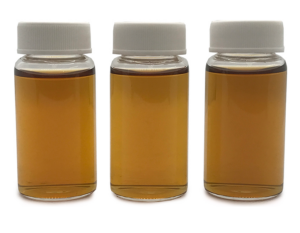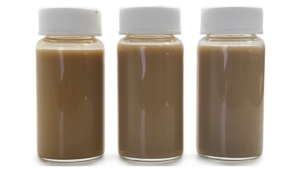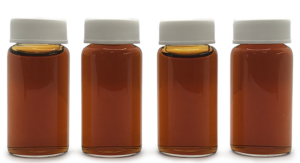Closing the Gap: Innovations in Class I Caramel Colour
Class I Caramel Innovations
Caramel colours are used to colour just about every kind of food product. And while you might think “brown is brown, why does it matter which class of caramel I use?” the technical properties vary widely between the three main classes – I, III, and IV.
Historically, class III, and IV caramels have demonstrated the best stability, cost-in-use, and darkest shades, but the trend toward minimal processing and simpler labels has created more interest in transitioning to class I caramel colour. That’s why recent innovations have focused on closing the gap between simplicity, darkness, and stability.
What does Success look like?
Success in application means good solubility, no turbidity, vibrancy throughout the shelf life of the product, the right shade, and a reasonable use-cost. Products like bread and candies are fairly straight forward to colour because issues like sedimentation and hazing don’t occur once the product is manufactured. But products like soy sauce and colas, on the other hand, require special consideration when choosing the right caramel due aspects such as high salt content or pH.
The challenge with using class I caramel colour in these applications has generally been use rate, shade, and stability differences in application. Below we’ll talk about some of the solutions we’ve developed to overcome some of these common hurdles.
Achieving Success with Class I’s
Use Rate & Darkness
Because class III and IV caramels can be very dark in colour and require low usage rates, it can be difficult to switch to class I’s that often require double or triple the use rate, which is why – to make it easier for companies who don’t have that kind of room in their formulations, we developed specialty dark class I caramel. Using an innovative cooking method, we were able to create a simple class I caramel that has a colour intensity similar to a class III or single-strength class IV caramel. This means that companies can achieve similar shades at similar use rates using a class I, as can be seen in the image below.

Shade
As you can see in the image below, standard class I caramels (left) tend to have a yellow tone to them, while many class III colours have more of a red tone to them (center). Because of this hue difference it can be difficult to find a class I that can match the shade when switching to simpler options. To overcome the hue hurdle, we created a class I caramel called Flex that can better bridge this gap (right), making it now possible to use class I caramels in applications like sauces where class IIIs are often favored.

Stability
Class IV caramels are generally the best options for sodas because they are incredibly stable at the low pH level of a concentrate (1.5-2.0). Class I caramels, on the other hand, are typically only stable above a pH of around 2.8. But because many soda companies are looking for simple label browns, we formulated our Flex caramel to be more acid stable, giving it the potential to be used in acidic soft drink applications. While a higher dose level is required to hit a similar shade to the class IV, it is a more acid stable option than other class I’s available.
Salt stability is another challenge for class I caramels. Soy sauce and bouillon cubes, for example, can contain upwards of 20% salt. Class III offers the best salt stability of any of the caramels, making it the ideal choice since caramels that are not salt-stable will form a haze in in the sauce and precipitate out. But salt stable class I options can also be as an option for those companies whose consumers are looking for simple labels. Our class I Flex performs well in up to 10% salt solution, and our 552 (seen in the image below) performs well in up to 20% salt solution with no hazing or precipitation.

Continuing Innovation
While innovations in processing and formulation have narrowed the capability gaps between the classes, challenges remain. The higher costs to replace class III and IV caramels remains a challenge for some customers, while flavor impact and viscosity remain hurdles for others.
But don’t fear – there are ways to overcome many of these challenges. Since there are many properties to consider when switching classes of caramels, the best way to find the right class I for your application is to work directly with our application scientists who are experts in dialing in on the right solution for your product. Contact us to get started on your project.
What is Caramel Color?
Caramel Color: What is it?
Caramel color is the most widely used non-synthetic color in the food and beverage industry. It is created through the controlled heating of sugars from sources such as corn, wheat, and sugar beet and they can range in hue from golden to dark brown.
why are there four classes?
Approved food-grade reactants, such as alkalis, acids, or salts, are used to promote caramelization. Based on the type of reactant that is used, the caramel is divided into one of four different types, or classes. They are: Class I (E150a), Class II (E150b), Class III (E150c), and Class IV (E150d). Each class of caramel color has different specifications on color intensity and hue. And while they are all favored for certain application, caramel color generally has excellent heat, light, and acid stability and works in many different applications.
Class I Caramel Color, E150a
Class I caramel colors, also known as plain caramels, are created by cooking a carbohydrate, typically glucose or sucrose, with acids, bases, or salts – such as citric acid. They generally range in hue from yellow to red-brown and have a slight negative colloidal charge.
While most class I caramel colors are only stable above pH 3.0, some are stable down to pH 2.8. These options do not contain 4-MeI or sulfites and have the highest stability in alcohol compared to the other three classes. They can be used in most applications: from baking to confections to beverages. Recently, demand for class I caramel colors has increased due to consumers looking for products with simpler labels. That’s why innovations in class I’s have focused on creating colors that can reach similar shades or use rates to Class III and IV caramels. Learn more about these advancements here.
Class II Caramel Color, E150b
Class II caramel colors, or spirit caramels, are created by cooking a carbohydrate with the aid of food grade sulfites. The hues can range from very yellow to dark red-brown and most are stable above pH 3.0. Class II caramels have a negative colloidal charge.
Like class I caramels, this class does not contain 4-MeI. They exhibit good stability in alcohol and are most commonly used in cognac, sherry, and brandy, giving them the name “spirit caramels”. Despite their excellent alcohol stability, these caramels are not frequently used because similar results can be obtained with class I’s.
Class III Caramel Color, E150c
Class III caramel colors, also called ‘beer caramels’, are created through the controlled heating of carbohydrate sources with food grade ammonium compounds. The resulting color ranges from a light brown to dark red-brown.
Class III Caramel Colors do not contain sulfites and have a positive colloidal charge in most food applications. They are typically beer stable and salt stable, making them a favorite for brewers looking to standardize dark beers or soy sauce and bouillon manufacturers that require a color that will be stable in a 20% salt solution.
Class IV Caramel Color, E150d
Class IV caramel color is the most widely used and versatile of the caramel colors. It is created by cooking a carbohydrate with food grade ammonium and sulfite compounds. The color ranges from a light brown to deep black-browns. Class IV caramels exhibit a strong negative charge over a wide pH range, making them the most versatile caramel colors. They are widely used in the soft drink industry due to their low dosage requirements and acid stability. We offer a wide variety of class IV options, including single-strength, double-strength, and low 4-MEI. Because this class of color contains 4-MEI, some organizations have called into question the safety of caramel color. Learn more about the safety of caramel color and new innovations here.
Ready to try it? Request a sample here.
Interested in learning more about caramel colors? Check out these resources:
